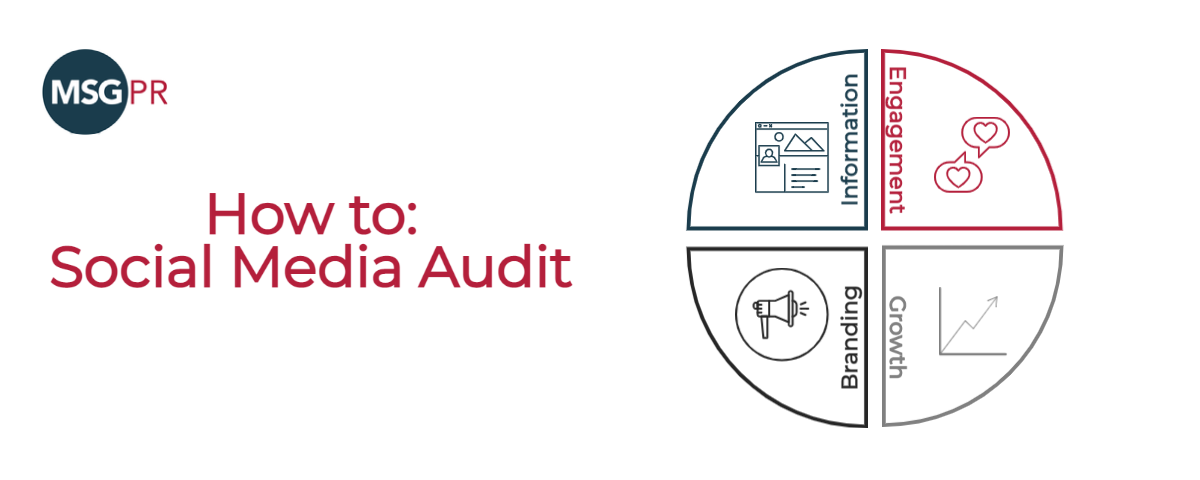Today, it’s hard to avoid social media. Especially as a small business, your social media presence is vital to customer relations and marketing. However, in the ever-changing social media landscape, sometimes it’s valuable to take a step back, and determine if your social media presence is achieving what you want it to.
What is a Social Media Audit?
Think of a social media audit as spring cleaning for your social platforms. A quick audit can ensure all your information is up to date and relevant, identify areas that are not performing as well as desired, and find new opportunities for growth and engagement. An audit gives you and your business clarity in what is working and not working, allowing you to develop a more effective social media strategy.
There are four core components of a simple social media audit: Information, Branding Continuity, Engagement Analysis, and Growth.

Step 1: Information Update
Identify all social media accounts tied to your business or organization. Even if they haven’t been used in a few years, locate and log onto each different platform. Once you’ve identified all your accounts, ensure they all have the correct information in their profiles and bios. (It’s also a great idea to have all of this information in one location or file.)
Specific information to check: location, phone number, email, website, operating times, summary, bio description.

Step 2: Brand Continuity
As you look at each account, ask yourself: Does each page align with your brand’s image and voice?
If so, you’re good to go, but more likely, there are some gaps in your brand’s continuity. Take inventory of your posts, images, promos, and even the language you use, and test them against your brand’s standards. Make sure all your bios match and your profiles are similar and recognizable across all platforms. Why does continuity matter? Brand Awareness. Consistent branding builds trust and improves brand awareness, both of which lead to a higher likelihood that a customer will buy from your brand.
Need help getting started with your brand image and style? Check out our overview of Brand Identity and how to make a basic Brand Style Guide.

Step 3: Engagement Analysis
What is working? Access your business portal to look at each page’s analytics. Pinpoint your best posts: the posts with highest engagement, shares, and likes. Now you know what kind of content your audience tends to interact with. This allows you to create a more effective content calendar and campaign focus that is tailored to what your audience already likes. At the same time, make sure to look at what is not performing well.
Potential questions to ask yourself as you analyze: What time of day does your audience tend to be most active? What types of posts garner the highest engagement: Videos? Text? Pictures? Stories? Which ones tend to have low engagement? Is there a commonality among your top performing posts? Is there a specific campaign that did very well?

Step 4: Growth Potential
Now for the fun part: take all of the information collected, return to the drawing board, and create a new social media strategy. Combine your branding continuity needs with your knowledge of effective content to identify specific areas of growth and set up a plan to get growing!
Need help getting started on creating effective social media goals? Check out our SMART Goals outline with a free template here.
If you know your social media strategy needs to be updated, but don’t have the time or just want an expert’s eye, give us a call and let us grow your business: (936) 637-7593.




